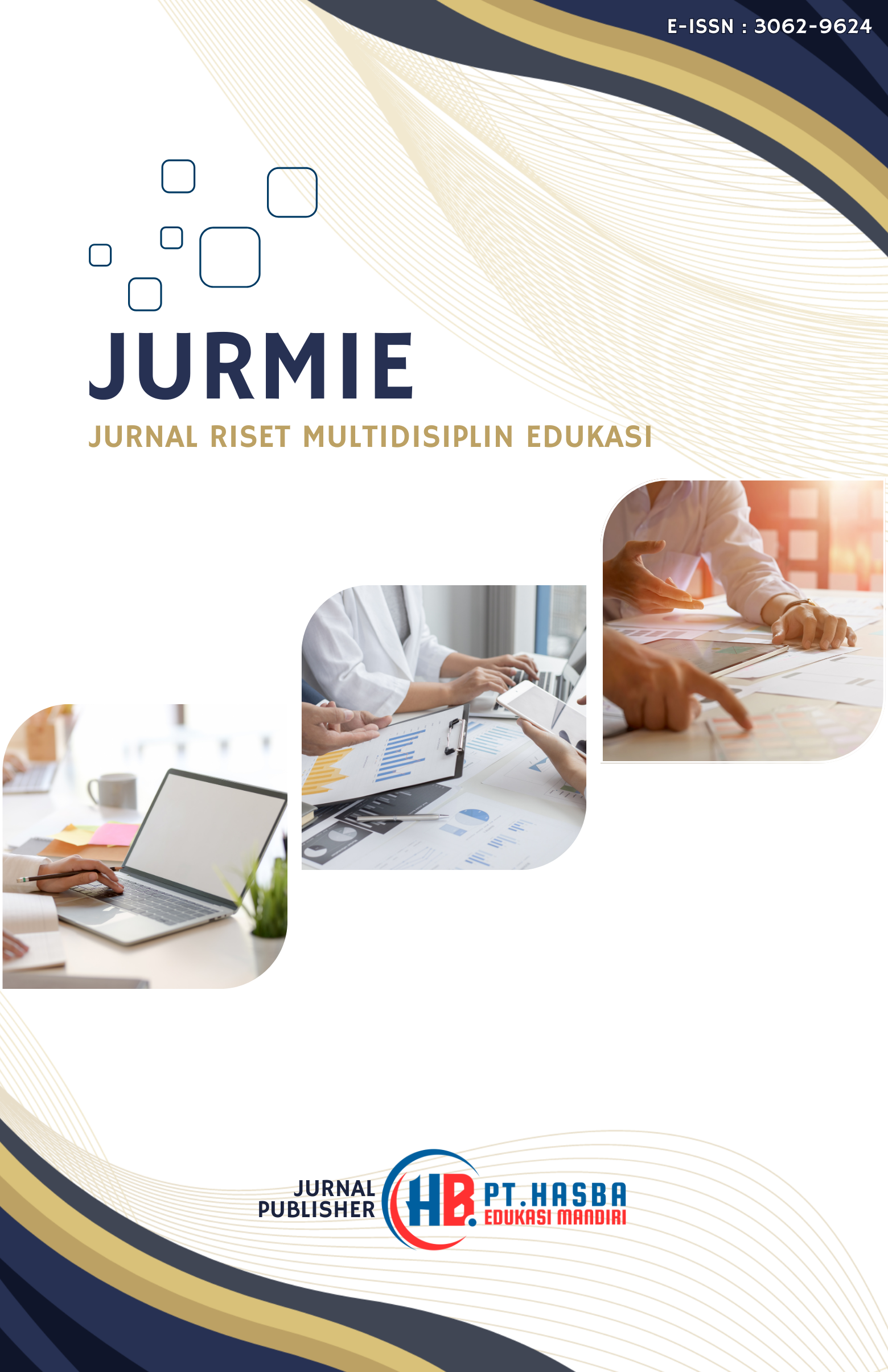Influence Of Perceived Usefulness, Perceived Ease Of Use And Social Influence On Behavioral Intention To Use Of E-Hailing Applications In Padang City: A Review Based On The Technology Acceptance Model Approach
DOI:
https://doi.org/10.71282/jurmie.v2i5.346Keywords:
Perceived Usefulness, Perceived Ease of Use, Social Influence, Behavioral Intention, E-Hailing Application, Technology Acceptance ModelAbstract
This study aims to analyze the ease of use of e-hailing applications in Padang City using the Technology Acceptance Model approach. The population in the study were people living in Padang City who had the E-Hailing Application on their mobile phones and the number of samples in this study was 280 respondents. The research method used was quantitative with data collection through online questionnaires. Data analysis was carried out using SmartPLS 4.0.9.9 software. The results of this study indicate that: (1) Perceived Ease of Use has a positive and significant effect on Perceived Usefulness. (2) Perceived Usefulness has a positive and significant effect on Behavioral Intention to use. (3) Perceived Ease of Use has a positive and significant effect on Behavioral Intention to use. (4) Social Influence has a positive and significant effect on Behavioral Intention to use. This study concludes that benefits, ease of use, and social influence are important factors in driving the adoption of e-hailing services. These results can be a basis for application developers and policy makers in designing strategies that are more adaptive to local user needs and behavior.
Downloads
References
Achim, N., Mohamed, D. B., Miji, S. C., Zuraini, N. N. A., Idil, M. I. R., Hilmen, A. J. L., & Anuar, A. F. (2024). Trust, Social Influence and Perceived Usefulness: Examining Online Purchase Intentions among Gen Z. Information Management and Business Review, 16(1(I)S), 261–271. https://doi.org/10.22610/imbr.v16i1(i)s.3748
Nazri, M. A., Ambak, K., Ghani, A. R. A., & Yazid, M. R. M. (2021). User’s Acceptance on e-Hailing System as Alternative Transportation by Using Modal Shift. International Journal of Integrated Engineering, 13(3), 108–118. https://doi.org/10.30880/ijie.2021.13.03.013
Patil, P., Tamilmani, K., Rana, N. P., & Raghavan, V. (2020). International Journal of Information Management Understanding consumer adoption of mobile payment in India : Extending Meta-UTAUT model with personal innovativeness , anxiety , trust , and grievance redressal. International Journal of Information Management, 54(February), 102144. https://doi.org/10.1016/j.ijinfomgt.2020.102144
Saari, U. A., Tossavainen, A., Kaipainen, K., & Mäkinen, S. J. (2022). Exploring factors influencing the acceptance of social robots among early adopters and mass market representatives. Robotics and Autonomous Systems, 151, 104033. https://doi.org/10.1016/J.ROBOT.2022.104033
Sarstedt, M., Ringle, C. M., & Hair, J. F. (2021). Partial least squares structural equation modeling. In Handbook of market research (pp. 587–632). Springer.
Soares, J. L., Christino, J. M. M., de Sevilha Gosling, M., Vera, L. A. R., & Cardozo, É. A. A. (2020). Acceptance and use of e-hailing technology: A study of Uber based on the UTAUT2 model. International Journal of Business Information Systems, 34(4), 512–535. https://doi.org/10.1504/IJBIS.2020.109019
Suryatenggara, G. M., & Dahlan, K. S. S. (2022). The Effect of Perceived Usefulness, Perceived Ease of Use and Perceived Price on Customer Loyalty in Gojek Through Customer Satisfaction (Study on Gojek Apps Users in Jabodetabek). Journal of Business & Applied Management, 15(2), 171. https://doi.org/10.30813/jbam.v15i2.3866
Downloads
Published
Issue
Section
License
Copyright (c) 2025 Nadia Putri Winata, Perengki Susanto (Author)

This work is licensed under a Creative Commons Attribution-ShareAlike 4.0 International License.













